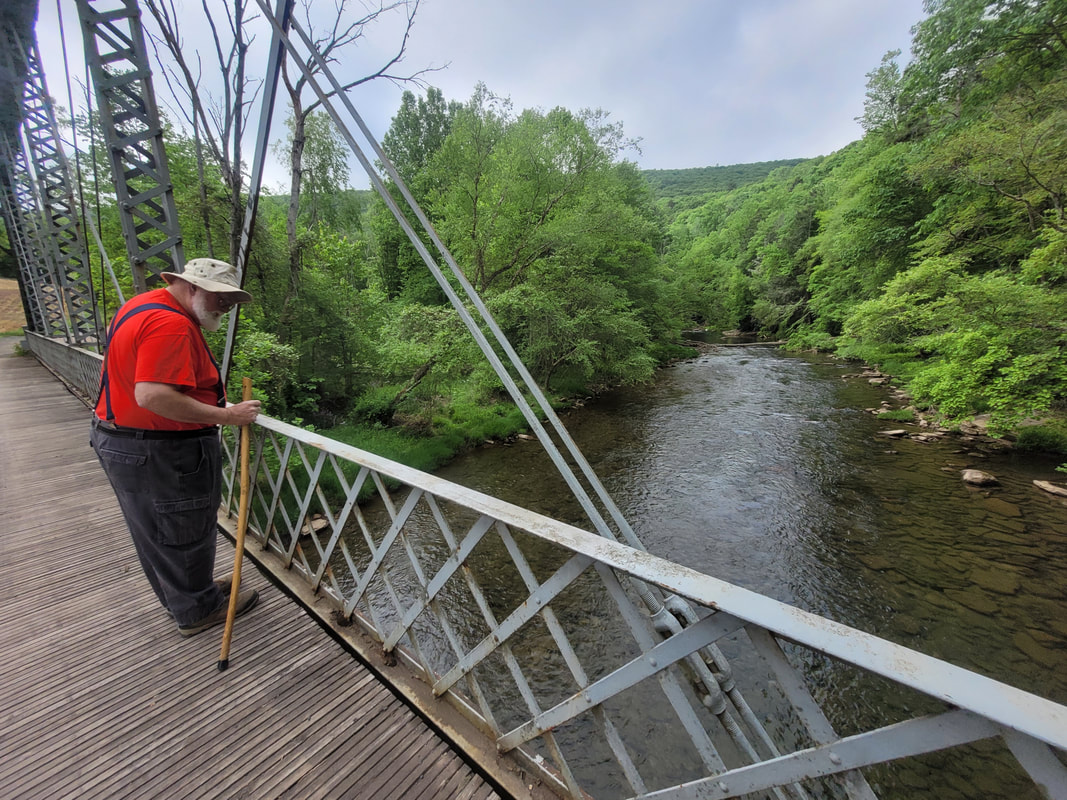|
As a 41-mile-long tributary of the Susquehanna River devastated by a large amount of aquatic-life-killing abandoned mine drainage contaminants, the Catawissa Creek deserves special recognition and raised awareness. It is critical for the creek to get the attention it needs so that a long-term treatment option can address the high acidity and gill-clogging aluminum suspended in the outflow of the abandoned Audenried Mine Tunnel discharge. According to a study done via a March 2020 Restoration Plan for Qualified Hydrologic Unit Determination of the Catawissa Creek by the Susquehanna River Basin Commission, (SRBC) “the Audenried Tunnel is the largest flow and the worst water quality outfall that enters Catawissa Creek. The flow exiting the Audenried Tunnel averages around ten times the flow of Catawissa Creek upon their confluence.”
Per 2018-2020 flow statistics, on average, Audenried contributes “901 tons per year of acidity, 107 tons per year of aluminum, 11 tons per year of iron and 32 tons per year of manganese to Catawissa Creek.” You can access the report of the Catawissa Creek by the SRBC here. In total, there are five mine tunnel discharges into the Catawissa Creek, but two of them cause minimal impact and two others, Oneida 1 and Oneida 3, have successfully been treated with passive systems. The final piece of the creek’s restoration puzzle centers around the Audenried. “Even though the mines were shut down a long time ago, we are still stuck with what’s left of that era because the tunnels are still open and we have water flowing out of them,” said Ed Wytovich, president of the Catawissa Creek Restoration Association. “In the 1960s and 70s, a study looked specifically at the Audenried tunnel, which runs about three miles from the mines until the water exits. It was found to carry about 80 percent of the acid load that kills, literally, the Catawissa Creek. If we were able to fix the issues coming out of the Audenried tunnel, we would restore 40 miles of stream.” Two previous efforts to treat the Audenried discharge were thwarted by unexpected massive flood events and, more recently, land access hurdles. Steps are being taken toward resolving the land access issues, with the creek’s potential as a world-class fishery hanging in the balance. “The stream itself may be the perfect example of sand and gravel, cobble and boulders – an ideal habitat for fish, microorganisms, benthic macroinvertebrates and all the thing that make up the food web that support the fish that so many people go after,” said Wytovich. “It has a wonderful riparian buffer throughout most of its entire length. It also has about 15 tributaries that hold wild brook trout populations. All the ingredients are there for success once the main body of water is cleaned up.” Which is why nomination for 2022 River of the Year designation was so critical for this creek and the larger Susquehanna watershed downstream. Abandoned mine drainage issues impair more than 7,000 miles of documented waterways in the state, and the Catawissa Creek is a poster child for both the damage caused, and the potential for remediation there can be with proper awareness, persistence and collaboration. While recent advances in the infrastructure bill is casting a bigger light on AMD impacts, a River of the Year win may have offered the final momentum needed for the Catawissa’s aquatic metamorphosis. The Middle Susquehanna Riverkeeper Association plans to assist local partners, such as the Catawissa Creek Restoration Association (CCRA), the Eastern PA Coalition for Abandoned Mine Reclamation (EPCAMR) and both the Columbia and Schuylkill county conservation district staffs, in building off the momentum created by the River of the Year nomination and helping the waterway achieve the treatment it needs to reach its potential. One vehicle for that effort will be a creek awareness festival later this year in the town of Catawissa. Planning for this event is still in its earliest stages, and local partners are encouraged to come forward and help bring it to life. In fact, the best thing people can do for the Catawissa Creek right now, is to get involved. The creek’s restoration association needs additional active members with a shared passion for this watershed. Beyond anything else, we challenge local families, businesses and individuals to reach out to Ed Wytovich and learn more about the CCRA and how they can partner for real change. Wytovich can be reached via email at [email protected] The Columbia County Conservation District also has resources for those who want to get involved in the Catawissa Creek’s fight for restoration. District director Nancy Corbin can be reached at [email protected]. Watershed specialist Aaron Eldred can be reached at [email protected] or via phone at 570-317-9478 (office) or 570-594-4244 (cell).
0 Comments
Leave a Reply. |
AuthorsRiverkeeper John Zaktansky is an award-winning journalist and avid promoter of the outdoors who loves camping, kayaking, fishing and hunting with the family. Archives
July 2024
Topics |

 RSS Feed
RSS Feed